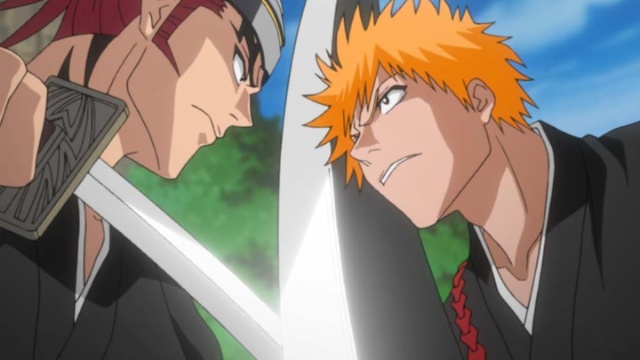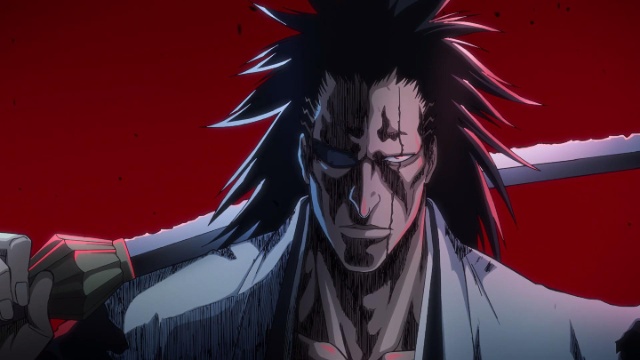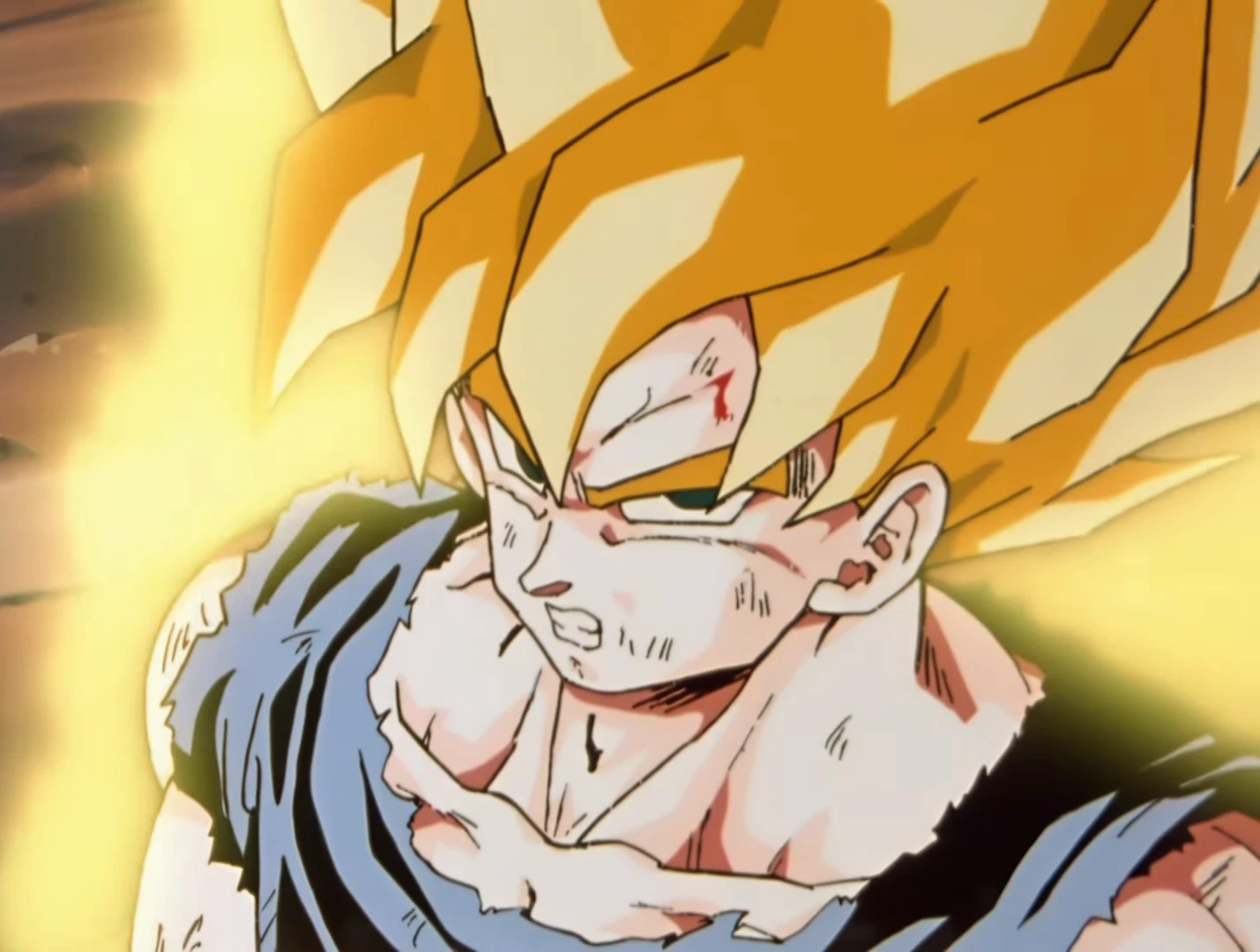In an era where anime films are no longer niche curiosities but global juggernauts, the silver screen has become a battlefield for shonen supremacy. Just look at Chainsaw Man – The Movie: Reze Arc, which chainsawed its way to a staggering $108 million worldwide in mere weeks, including a jaw-dropping $17.3 million U.S. opening weekend that left Hollywood heavyweights like The Boss choking on exhaust. Or rewind to 2020’s Demon Slayer: Kimetsu no Yaiba – The Movie: Mugen Train, which didn’t just break records—it obliterated them, raking in over $507 million globally and cementing Ufotable as a cinematic powerhouse. These triumphs weren’t accidents; they capitalized on serialized hype, distilled high-octane arcs into visually explosive packages, and lured casual viewers with IMAX-ready spectacle. Now, as Bleach: Thousand-Year Blood War (TYBW) Part 4 gears up for a 2026 premiere, whispers of a Bleach film are growing louder. But does Tite Kubo’s soul-reaping saga have the untapped material to fuel a worthy cinematic resurrection? Would it satisfy die-hard fans, or dilute the legacy? And crucially, does Bleach need this big-screen glow-up to stay relevant? Let’s zanpakuto-slice into the details.
A Legacy in Limbo: Bleach’s Rollercoaster Ride to Revival
To understand Bleach’s film potential, we must first exorcise its ghosts. Launched in 2001, Kubo’s manga followed Ichigo Kurosaki, a strawberry-haired teen thrust into the afterlife’s Soul Society as a Substitute Soul Reaper, battling Hollows, Arrancars, and godlike foes with a blend of streetwise grit and metaphysical flair. The anime adaptation, airing from 2004 to 2012 across 366 episodes, mirrored this ascent but stumbled hard. Pacing issues, an avalanche of filler arcs (like the infamous Bount saga, a 28-episode detour into vampire-wannabe territory that alienated viewers), and a controversial manga ending in 2016 left Bleach fading from the “Big Three” spotlight (Naruto, One Piece, and itself).
Enter the TYBW revival. Announced in 2020, this four-part anime event—produced by Studio Pierrot with elevated budgets and direction from Tomohisa Taguchi—adapts the manga’s climactic 2012-2016 arc, where Ichigo and allies confront the Quincy empire’s invasion led by the omnipotent Yhwach. Parts 1 and 2 (2022-2023) exploded onto Disney+ and Hulu, with episodes like Ichigo’s Bankai reveal clocking 1.5 million global views in 24 hours. Part 3, “The Conflict,” wrapped in late 2024 with rave reviews for its fluid animation and orchestral swells, boasting a 9.2/10 on MyAnimeList—higher than Demon Slayer’s Swordsmith Village arc. As of October 2025, Part 4 (“The Calamity”) is locked for 2026, promising anime-original flourishes like expanded Quincy lore and new character designs penned by Kubo himself. Pierrot’s new Pierrot Films division, teased for “extremely high-quality” output, hints at even grander visuals—think fluid Getsuga Tensho slashes rivaling Demon Slayer’s water-breathing ballets.
Yet, with the manga fully adapted by TYBW’s end, skeptics wonder: What’s left for a film? The answer lies in Bleach’s expansive, under-explored underbelly.
Untapped Quincy Quivers: Material Ripe for the Reaping

Bleach isn’t starved for stories—it’s a treasure trove of side quests begging for animation. The core manga spans 74 volumes, but Kubo’s universe extends via light novels, one-shots, and cliffhangers. Prime candidates include the “Hell Arc,” a 2021 one-shot manga chapter teasing a post-TYBW sequel where Ichigo delves into Hell to battle escaped souls like Szayelaporro Granz. This compact tale—focusing on redemption, eternal torment, and grotesque body horror—mirrors Reze Arc’s intimate, explosive vibe: a self-contained bomb of action and emotion, perfect for a 90-120 minute runtime.
ALSO READ: The Big Three of Shonen Anime: Why One Piece, Bleach, and Naruto Reign Supreme
Then there’s the novel goldmine. Can’t Fear Your Own World (CFYOW, 2018-2020), a three-volume epic supervised by Kubo, bridges TYBW’s end with fresh threats. It spotlights Tokinada Tsunayashiro, a rogue noble wielding the insidious Kuten Kyokoku (a zanpakuto that rewrites reality), forcing Shuhei Hisagi into a moral maelstrom. Packed with Quincy flashbacks, Soul King origins, and brutal duels—like Hisagi’s desperate stand against a reality-warping blade—CFYOW expands on themes of institutional rot that TYBW only grazed. Fans on X have clamored for this, with one viral post declaring, “WHEN PRODUCTION FOR COUR 4 ENDS, AROUND 2028 WE WILL RECEIVE AN ANIME ADAPTATION FOR THE BLEACH LIGHT NOVELS!”—a rumor fueled by Kubo’s July 2025 confirmation of novel ties in Part 4. Other novels like Spirits Are Forever With You (starring a prequel-era Nanao Ise) or We Do Knot Always Love You (wedding drama amid Soul Society intrigue) offer rom-com contrasts to shonen brawls, ideal for anthology-style films.
Unlike Chainsaw Man, where Reze Arc slotted neatly between manga pauses, or Demon Slayer’s Infinity Castle (a linear train-set thriller amplifying Tanjiro’s family bonds), Bleach’s films could remix timelines. Imagine a “Hell Verse” redux—not a filler retread, but a canon-expanding epic with modern sakuga, echoing Jujutsu Kaisen’s prequel film success. With Jump Festa 2026 looming (December 20-21), insiders buzz about “big announcements,” including potential movie teases alongside live-action Warner Bros. talks dating back to 2006. Material? Overflowing. The real question: Would it honor the hollows of fan expectation?
Fan Feast or Filler Fumble? Weighing Worthiness in the Balance
For Bleach’s faithful—those who tattooed zanpakuto symbols during the 2012 drought—a film could be cathartic vindication. TYBW has already redeemed the series: Part 1’s premiere trended worldwide, spawning memes of Byakuya’s ice phoenix and Uryu Ishida’s betrayal twist. A movie adaptation of CFYOW or Hell Arc would amplify this, zeroing in on character arcs glossed over in TV pacing. Picture Hisagi’s growth from comic relief to anti-hero, animated with the kinetic fury of Denji’s bomb-dodging rampage in Reze—visceral, intimate, and unfiltered by commercial breaks. X users echo this hunger: “Movie 100%. It’s a better model to make more money which then increases chances of getting even more content,” one fan argued, highlighting how films like Infinity Castle spiked Demon Slayer merch sales by 300% and manga volumes by double digits.
The worthiness hinges on execution. Pierrot’s track record is checkered—filler fatigue scarred a generation—but TYBW’s upgrades (e.g., Shiro Sagisu’s remixed OST with orchestral Quincy anthems) suggest maturity. A film could deploy IMAX for Yhwach’s Almighty foresight sequences, where futures fracture like shattered mirrors, outshining even Infinity Castle’s flame-engulfed finale. Fan art floods X with concepts: Ichigo’s true Bankai clashing with Tokinada’s illusions in a symphony of black-and-white reiatsu. Yet risks lurk. Rushed adaptations could butcher nuance, like Naruto’s The Last‘s polarizing romance focus. Or worse, alienate purists if originals dominate, as teased for Part 4. Still, with Kubo’s hands-on involvement (he’s redrawing designs for TYBW), a film feels like a love letter, not a cash grab—worthy if it swings for the Soul King.
Does Bleach Need the Neon Lights? A Strategic Senbonzakura
Necessity is the mother of Quincy invasions. Bleach doesn’t crave a film like a Hollow hungers for souls—TYBW alone has revitalized it, with Part 3 boosting Weekly Shonen Jump sales 15% and spawning collabs from Nike to Uniqlo. But in a post-pandemic market where anime films gross billions (Demon Slayer’s Infinity Castle trilogy already eyeing ¥20.5 billion for its opener alone, despite pacing gripes that it “ruined the franchise” by truncating emotional beats), Bleach risks stagnation. Chainsaw Man’s Reze film didn’t just profit; it bridged anime hiatuses, pulling 2 million U.S. theatergoers and priming Season 2 hype. Similarly, Infinity Castle transformed Demon Slayer from streaming darling to cultural phenomenon, expanding its audience 40% among non-manga readers.
For Bleach, a film is strategic jujutsu: Post-2026, with TYBW concluded, it counters One Piece’s endless endurance and Jujutsu’s feverish finale. It could target lapsed fans scarred by 2012’s abrupt end, using spectacle to reboard them—envision Hell’s crimson rivers and chained titans in 4DX, rumbling seats syncing with Gran Rey Cero blasts. X sentiment splits: Some decry movies as “forcing a circle into a square,” fearing manga’s unique panel flow loses punch, while others pine for OVAs or trilogies recapping arcs like Hueco Mundo. Demand exists—petitions for novel adaptations hit 50K signatures—but Bleach’s “need” is less survival than evolution. Without it, Pierrot might pivot to safer bets like Naruto spin-offs, leaving Ichigo’s legacy to fade like a poorly sealed gigai.
Soul-Slaying Showdown: Can Bleach Outshine Demon Slayer and Chainsaw Man at the Box Office and in Animation Brilliance?
In the high-stakes arena of anime cinema, where Demon Slayer: Kimetsu no Yaiba – The Movie: Infinity Castle redefined global dominance with its $666 million haul and Chainsaw Man – The Movie: Reze Arc carved out $108 million in weeks, Bleach faces a towering challenge to claim the throne. But does Tite Kubo’s soul-reaping epic have the spiritual pressure to outgross these titans and eclipse their animation benchmarks? With Thousand-Year Blood War (TYBW) reigniting global fervor, a Bleach film—whether adapting the Hell Arc or Can’t Fear Your Own World—has unique ingredients to not just compete but potentially redefine the shonen cinematic landscape. Let’s dissect its box office muscle and animation edge.
Box Office Bankai: Can Bleach Break the Billion-Yen Barrier?
Demon Slayer’s Infinity Castle didn’t just succeed—it rewrote history, becoming the highest-grossing Japanese film ever at ¥33 billion ($220 million domestically) by tapping into universal themes of perseverance, friendship, and ultimate sacrifice, amplified by a theater landscape hungry for epic conclusions in a streaming-saturated era. Chainsaw Man’s Reze Arc, with its $17.3 million U.S. opening, leaned on raw, anarchic energy and MAPPA’s cult-like following, drawing 2 million American theatergoers despite a niche, gore-heavy premise. Bleach, however, wields a distinct advantage: a 20-year legacy spanning generations, from 2000s teens to 2020s newcomers. TYBW’s streaming dominance—1.5 million views per episode on Disney+—proves its global pull, rivaling Demon Slayer’s peak streaming numbers and outpacing Chainsaw Man’s pre-film buzz.

A Bleach film could capitalize on this momentum, especially with strategic timing post-TYBW Part 4 in 2026. Unlike Demon Slayer, which leaned on a single arc’s emotional crescendo, or Chainsaw Man, thriving on avant-garde shock, Bleach offers a mythic sprawl—think Lord of the Rings meets samurai noir. A Hell Arc film, with its Dante-esque descent into a fiery underworld, could merge spectacle (Ichigo’s blazing Mugetsu) with existential dread, appealing to both shonen adrenaline junkies and arthouse crowds drawn to Jujutsu Kaisen 0’s $195 million philosophical gut-punch. Add Kubo’s knack for iconic designs—new Hell-born Hollows teased in his 2021 one-shot—and you’ve got merch-ready visuals to rival Tanjiro’s haori or Denji’s chainsaw skull, potentially spiking sales by 200-300% like Demon Slayer’s post-film boom.
Box office potential hinges on global reach. Bleach’s Latin American and Southeast Asian fanbases, evident in X trends like #BleachRegresa topping Mexico’s charts in 2022, mirror Demon Slayer’s international surge (over 60% of its gross from outside Japan). A Bleach film could target $200-300 million globally, leveraging IMAX and 4DX for visceral Bankai clashes—imagine Zangetsu’s energy waves rattling seats. If Pierrot markets it as a cultural event, tying it to Jump Festa 2026 or a global premiere with Kubo’s involvement, it could challenge Reze’s $108 million and, with crossover appeal, approach Jujutsu’s $195 million—or even edge toward Infinity Castle’s monumental $666 million benchmark. Surpassing that record-breaking titan is ambitious, but Bleach’s untapped novels and fervent X campaigns (e.g., 50K-signature petitions for CFYOW) suggest it could slice closer than skeptics think.
Animation Ascension: Can Pierrot Outshine Ufotable and MAPPA?
Animation quality is where Bleach could truly unsheathe its zanpakuto. Demon Slayer’s Ufotable set an industry gold standard with Infinity Castle’s labyrinthine dimension-shifting battles and seamless CGI, while Chainsaw Man’s MAPPA delivered Reze’s painterly chaos, with blood splatters and bomb blasts that felt like a punk rock fever dream. TYBW, under Studio Pierrot’s reborn Pierrot Films, has already flexed cinematic muscle: Part 3’s Quincy battles, with crystalline Sternritter arrows and Ichigo’s dual-wielded Zangetsu, earned a 9.2/10 on MyAnimeList for animation alone, edging out Demon Slayer’s Swordsmith Village (9.0/10).
ALSO READ: Is Jujutsu Kaisen the Spiritual Successor to Bleach? Exploring Inspirations and Parallels
A Bleach film could push further. Pierrot’s 2025 tech upgrades—think real-time lighting for reiatsu flares and 2D-3D hybrid sequences—rival Ufotable’s polish. Imagine a CFYOW film where Tokinada’s reality-bending zanpakuto fractures the screen like a kaleidoscope, or a Hell Arc where skeletal Hollows erupt from molten chains in 4K detail. Kubo’s direct input, redrawing character designs for Part 4, ensures visual fidelity that Chainsaw Man’s looser manga adaptation lacked. Posts on X rave about TYBW’s “sakuga porn,” with Byakuya’s Senbonzakura petals animated at 24 frames per second, a fluidity that could make a film’s action sequences—say, Hisagi’s chain-whip Bankai—feel like a spiritual successor to Demon Slayer’s Muzan showdown infernos.
The catch? Pierrot must avoid past sins. Their filler-heavy 2000s era sparked fan backlash, unlike Ufotable’s laser-focused arcs. But TYBW’s budget hikes and Taguchi’s direction signal discipline. A film could blend Demon Slayer’s emotional clarity (e.g., Hisagi’s moral struggle) with Chainsaw Man’s raw intensity (Hell’s body horror), all while wielding Bleach’s unique aesthetic: stark blacks, whites, and blood-red accents. If Pierrot deploys Shiro Sagisu’s orchestral OST—think Quincy leitmotifs swelling over apocalyptic vistas—they could outshine MAPPA’s experimental edge and match Ufotable’s operatic grandeur.
The Verdict: A Soul Reaper’s Shot at Supremacy

Bleach has the raw potential to rival, if not surpass, its peers. Its box office path hinges on universal themes (redemption, legacy) and global hype, potentially hitting $200-300 million—short of Infinity Castle’s record-shattering anomaly but competitive with Reze and Jujutsu. Animation-wise, Pierrot’s TYBW glow-up positions it to challenge Ufotable’s polish and MAPPA’s audacity, especially with Kubo’s vision steering the ship. The X factor? Bleach’s underdog narrative. Fans rallying on X, chanting “Give us Hell Arc in IMAX,” could fuel a cultural wave, turning a Bleach film into a phoenix rising from 2012’s ashes—a spectacle that doesn’t just match but redefines shonen cinema’s cutting edge.
The Final Getsuga: A Blade Worthy of the Hype?
As Jump Festa 2026 beckons with promises of “big announcements,” a Bleach film feels tantalizingly tangible—not a hollow echo, but a Mugetsu-level event. With novels brimming, fans frothing (one X thread dreams of Michael B. Jordan helming a live-action tie-in), and precedents like Reze’s gore-soaked triumph proving shonen’s cinematic chops, the material is there. It’d be worthy: a focused fury honoring Kubo’s intricate world-building, from Quincy silver arrows to Hell’s ironic torments. And yes, it needs it—to etch Bleach eternally in the pantheon, slashing past filler shadows into unassailable light.
Whether it’s CFYOW’s conspiracies or Hell’s horrors, one thing’s certain: If Bleach draws its blade for the screen, it’ll be no filler. It’ll be final. And fans? They’ll be screaming “Bankai!” from the rooftops.
ALSO READ: 20 Most Anticipated Anime Series and Films of 2026: A Year of Epic Returns and Fresh Fantasies

Hello, I am a huge anime fan with a decent experience in writing articles regarding the anime industry.


